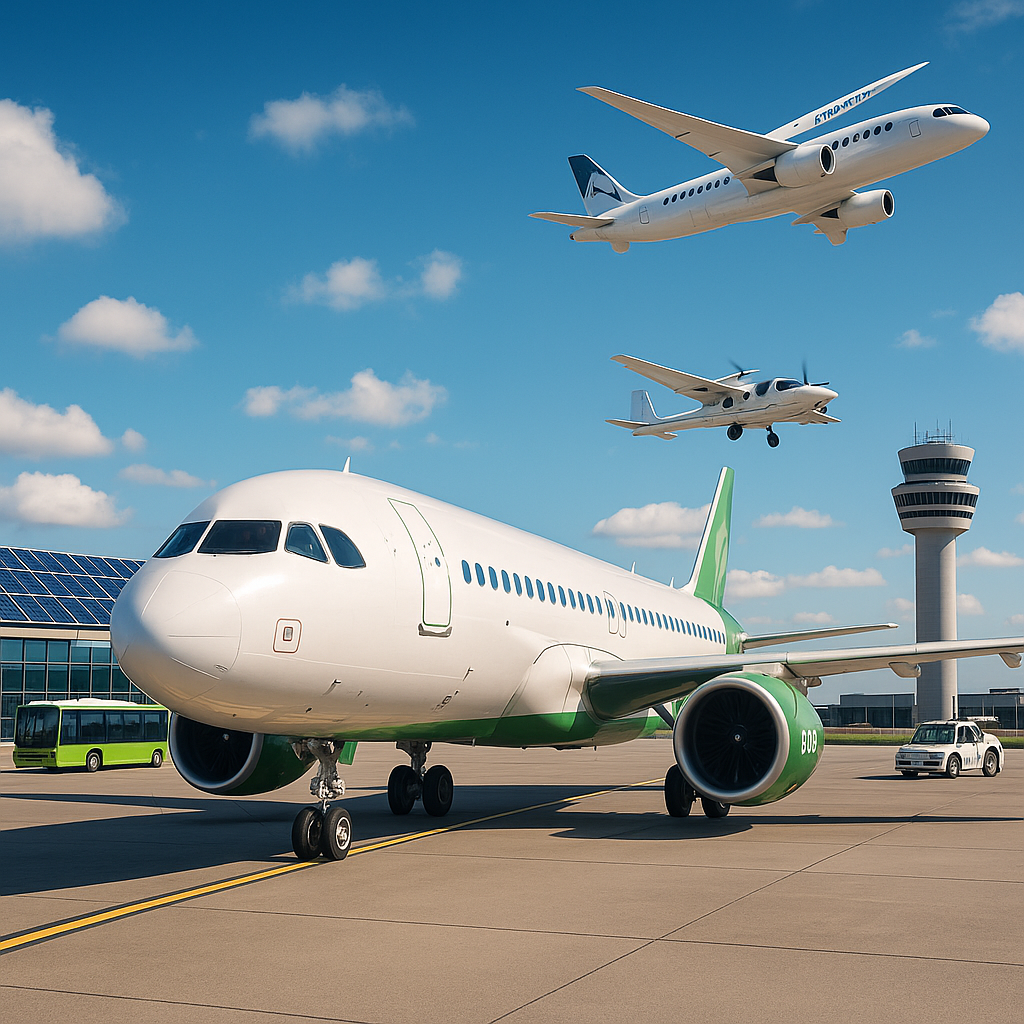
By Elke Porter | WBN News Global | April 17, 2025
The aviation industry, responsible for about 2% of global carbon emissions, is under increasing pressure to decarbonize. What was once seen as a distant aspiration—flying sustainably—is now a critical mission. With new technologies and ambitious commitments, the industry is navigating a path toward net-zero emissions by 2050.
At the forefront of this transformation is Sustainable Aviation Fuel (SAF). Produced from renewable sources like biomass, used cooking oil, or captured carbon, SAF can reduce lifecycle emissions by up to 80% compared to conventional jet fuel. Major carriers like United and Delta are expanding SAF use, yet high costs and limited production remain major hurdles to mass adoption.
Sustainable Aviation Fuel (SAF) plays a key role, with over 450,000 flights already using SAF blends and more than 50 airlines gaining experience. Seven technical pathways exist to produce SAF, offering up to 80% lifecycle emission reductions, and over 300 million litres were produced in 2022.
However, SAF still makes up only about 0.1% of global jet fuel use—a figure that has stagnated for years. Despite growing environmental pressure, adoption remains slow due to high costs, with SAF from waste oils costing around 50% more and power-to-liquid fuels up to 200% more than traditional jet fuel.
60 companies committed to working together to power global aviation with 10% SAF by 2030. The commitment, which includes airlines, airports, fuel suppliers, aviation innovators, and non-aviation companies that rely on air travel, demonstrated a significant shift in fuelling plans for a large number of airlines, including British Airways, Delta Airlines, KLM, United Airlines and Virgin Atlantic.
Meanwhile, emerging technologies such as hydrogen-powered and electric aircraft offer zero-emission alternatives. Companies like ZeroAvia and Airbus are testing hydrogen propulsion, aiming to bring clean-burning aircraft to market within the next decade. Electric planes, ideal for short-haul regional flights, are also nearing commercial readiness.
Operational efficiencies are improving emissions today. Airlines are optimizing flight routes, reducing taxiing times, and retrofitting fleets with lighter materials and more efficient engines. Innovations like Airbus’s “fello’fly,” which allows aircraft to fly in formation to reduce drag, mimic nature to save fuel.
On the ground, airports are evolving. From solar-powered terminals to electric ground vehicles, hubs like Singapore’s Changi Airport are adopting greener practices to cut carbon footprints. According to airport gurus blog, here are the list of top ten eco-friendly airports:
- Jewel Changi Airport, Singapore
- Dubai International Airport, UAE
- Denver International Airport, USA
- Stockholm Arlanda Airport, Sweden
- Indira Gandhi International Airport, India
- Galapagos Ecological Airport, Galapagos Islands
- Zurich Airport, Switzerland
- Oslo Airport, Norway
- Boston Logan International Airport, USA
- San Diego International Airport USA
While carbon offsetting remains a temporary and sometimes controversial strategy, it provides a stopgap as technology and infrastructure evolve. Increasingly, passengers are seeking out eco-conscious travel options and rewarding airlines with strong environmental commitments.
Flying sustainably is not just possible—it’s underway. Though challenges remain, a coordinated global effort is helping aviation lift off into a cleaner, more responsible era of travel.
#Sustainable Aviation #Green Travel #Aviation Innovation #Clean Skies #Eco Friendly Flights #Net Zero 2050 #Future Of Flight #SAF #WBN News Global #Elke Porter
Connect with Elke at Westcoast German Media or on LinkedIn: Elke Porter or contact her on WhatsApp: +1 604 828 8788


